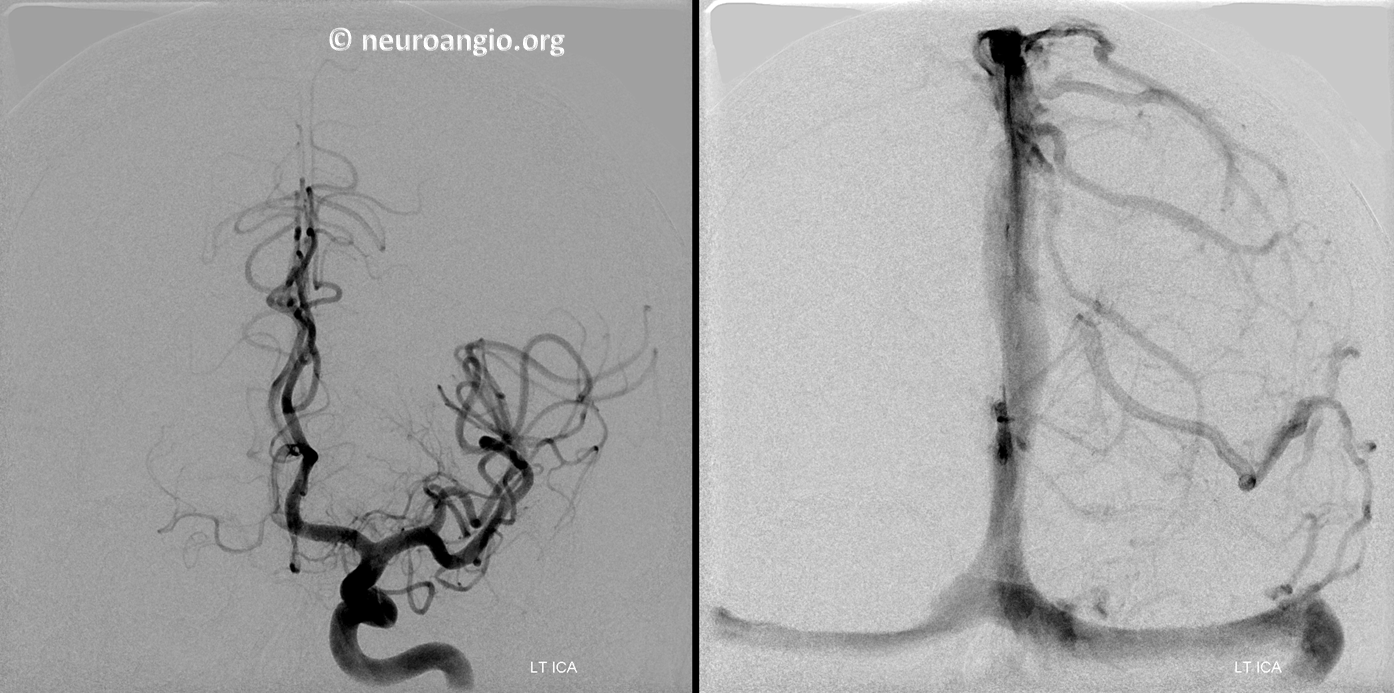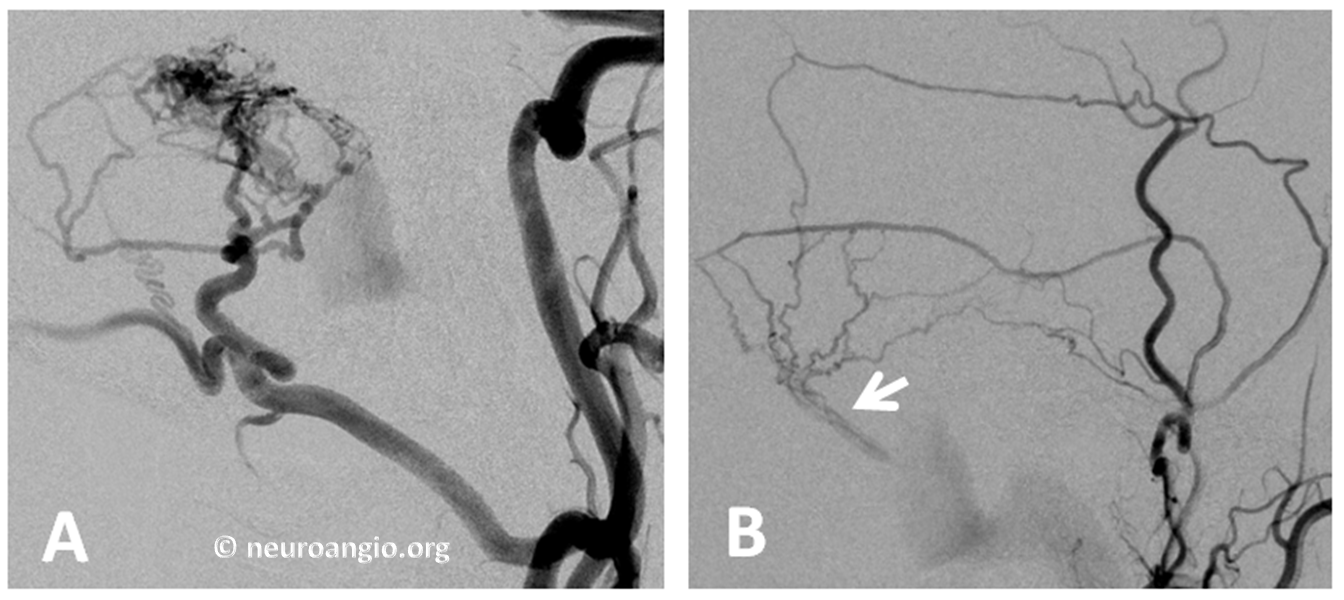Case Courtesy Dr. Peter Kim Nelson and Dr. Eytan Raz
Another example of superselective dural fistula embolization — targeting common channel in wall of the sinus upon which all arterial feeders converge. A superselective transvenous embolization that is safe, effective, and highly elegant. It preserves the parent sinus without hazard associated with use of transarterial liquid embolics. The key is to recognize target — a common channel in the wall of the sinus which most believe to be a venous septation or pouch. We believe it is an artery but, regardless, the treatment works anyway. Here is another elegant example

Sinus is patent with antegrade flow — Cognard 1

Occipital supply

Subselective views show fistula angioarchitecture. Middle meningeal contribution specifically highlights the common channel (arrow) which gathers all arterial supply, draining into the sigmoid sinus

An awesome picture. A 5F Vert catheter (black arrow) is navigated into from the jugular into the opening of the fistula, with retrograde injection beautifully opacifying the common channel (white arrow) and all its arterial tributaries

A scepter balloon is then placed into the channel. The tip is marked by white arrow and balloon portion is between black arrows, partially in the guidecatheter

Arterial injection shows that this already has stopped fistula flow

Onyx is used in this case; balloon inflation prevents onyx flow into the sinus. A small amount is all it takes

Post

Post CT shows location of Onyx cast in the wall of the sinus

Conclusions: Superselective works. Recognition of key anatomical features establishes strategy with a safe, effective, and elegant approach
Other cases on website:
Sigmoid Fistula Superseletive Embolization 1
Complex Condylar Fistula Superseletive 1
Ethmoid Fistula Superselective Embolization
Literature
Mironov A. Selective transvenous embolization of dural fistulas without occlusion of the dural sinus. AJNR American journal of neuroradiology 1998;19:389-391
Piske RL, Campos CM, Chaves JB, et al. Dural sinus compartment in dural arteriovenous shunts: a new angioarchitectural feature allowing superselective transvenous dural sinus occlusion treatment.
Caragine LP, Halbach VV, Dowd CF, et al. Parallel venous channel as the recipient pouch in transverse/sigmoid sinus dural fistulae. Neurosurgery 2003;53:1261-1266; discussion 1266-1267
